This page forms part of a series of pages dedicated to the many artists who worked in Trouville-sur-Mer. A full list of all the artists with a link to their works can be found at the bottom of this page.

Movement(s): Romanticism
Richard Parkes Bonington (1802 – 1828) was an English Romantic landscape painter, who moved to France at the age of 14 and can also be considered as a French artist, and an intermediary bringing aspects of English style to France.
Richard Parkes Bonington was born in the town of Arnold, four miles from Nottingham. His father also known as Richard was successively a gaoler, a drawing master and lace-maker, and his mother a teacher. Bonington learned watercolour painting from his father and exhibited paintings at the Liverpool Academy at the age of eleven.
In 1817, Bonington’s family moved to Calais, France, where his father had set up a lace factory. At this time, Bonington started taking lessons from the painter François Louis Thomas Francia, who, having recently returned from England, where he had been deeply influenced by the work of Thomas Girtin, taught him the English watercolour technique.
In 1818, the Bonington family moved to Paris to open a lace shop. There he met and became friends with Eugene Delacroix. He worked for a time producing copies of Dutch and Flemish landscapes in the Louvre. In 1820, he started attending the Ecole des Beaux-Arts in Paris, where he studied under Antoine-Jean, Baron Gros.
In 1825 he met Delacroix on a visit with Alexandre-Marie Colin to London, and they sketched together there, and shared a studio for some months in Paris on their return; Delacroix influenced him in turning to historical painting.
He also developed a technique mixing watercolour with gouache and gum, achieving an effect close to oil painting. In 1826 he visited northern Italy, staying in Venice for a month, and London again in 1827–8.
In late 1828 his tuberculosis worsened and his parents sent him back to London for treatment. Bonington died of tuberculosis on 23 September 1828 at 29 Tottenham Street in London, aged 25.
He was buried in the graveyard of St James’s Chapel Pentonville and in 1837 his remains were translated to Kensal Green Cemetery to be re-interred with his parents.
Bonington had a number of close followers, such as Roqueplan and Isabey in France, and Thomas Shotter Boys, James Holland, William Callow and John Scarlett Davis in England. In addition, there were many copies and forgeries of his work made in the period immediately after his death.
Click here to read Bonington’s full bio on Wikipedia.
NOTE: Click on any image below for a bigger version (no new window will open).
NOTE: A black box like this one, means that there is an explanation text about today’s situation of the painting above it.
NOTE: Click on this photo icon ![]() anywhere below a painting to see a photo of what the area looks like today.
anywhere below a painting to see a photo of what the area looks like today.
NOTE: A blue box like this one, means there is an explanation or a note.
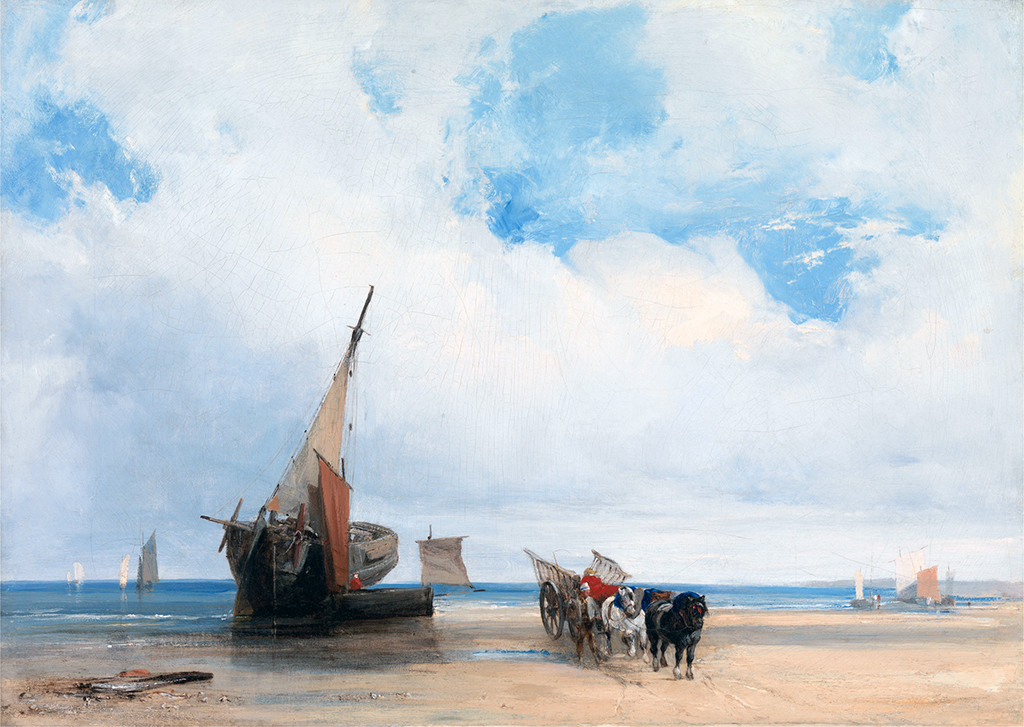
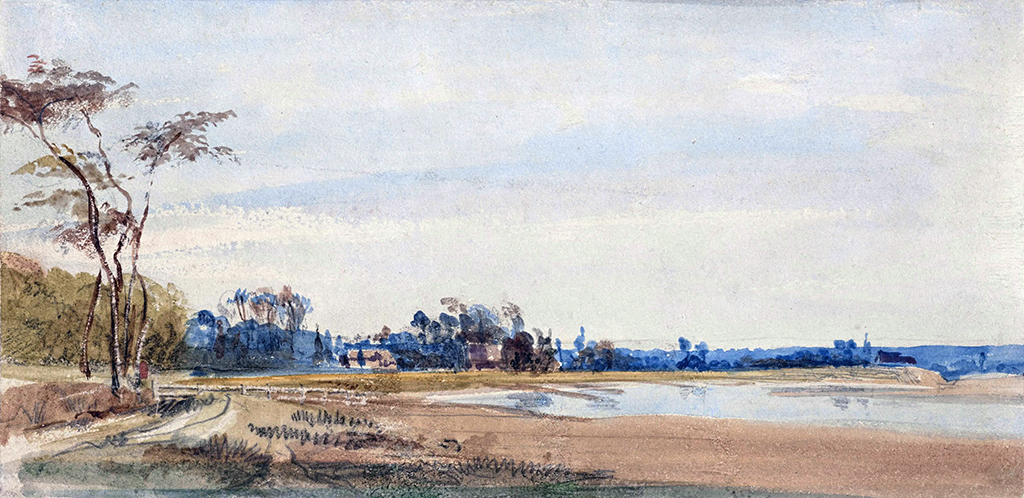
NOTE: Over the centuries, there were several salt marshes between Deauville, Trouville and Honfleur. It was quite an industry. Nowadays, they no longer exist.

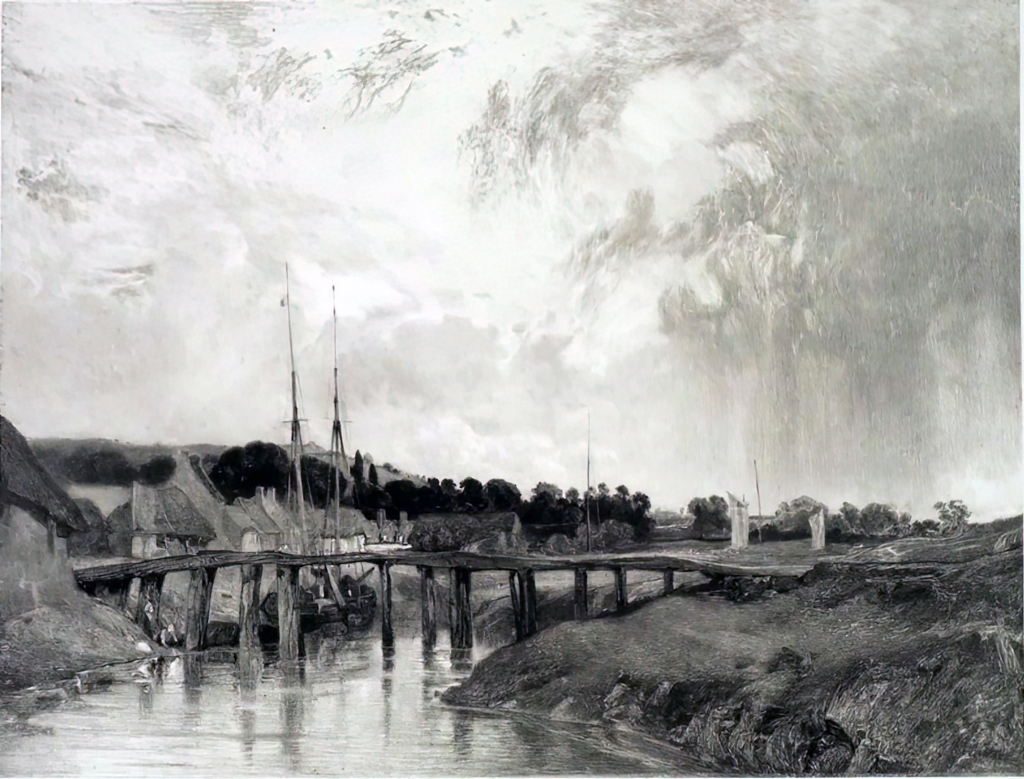
NOTE: The Touques is the main river that divides Deauville from Trouville.
Bonington painted mostly in many cities in France (a link “⇠” to his works in those cities will appear below when published):
- Auvergne-Rhone-Alpes
- Hauts-de-France
- Boulogne
- Calais
- Dunkerque
- Normandy
- Caudebec-en-Caux (and surrounding): ⇠
- Jumieges ⇠
- Le Havre (and surroundings): ⇠
- Harfleur ⇠
- Quillebeuf ⇠
- Le Treport
- Mont St Michel
- Rouen
- Trouville-sur-Mer ⇠
- Caudebec-en-Caux (and surrounding): ⇠
Trouville-sur-Mer has been an in-spot for artists and wealthy patrons. Located next to Deauville and sharing the same railway station,many artists came here to work and mingle with the high-societe folks.
Here is a list of artists who working in Trouville (a link “⇠” to that artist’s works will appear when published). An “*” after an artist’s name means that the artist did not work in Trouville itself, but in a nearby town.
- 🇫🇷 Binet, George ⇠
- 🇺🇸 Boggs, Frank Myers ⇠
- 🇬🇧 Bonington, Richard Parkes ⇠
- 🇫🇷 Boudin, Eugene-Louis ⇠
- 🇬🇧 Boys, Thomas Shotter ⇠
- 🇫🇷 Bruelle, Gaston ⇠
- 🇫🇷 Caillebotte, Gustave ⇠
- 🇺🇸 Chapman, Conrad Wise ⇠
- 🇫🇷 Chapuis, Pierre ⇠
- 🇫🇷 Ciceri, Eugene ⇠
- 🇫🇷 Courbet, Gustave ⇠
- 🇫🇷 Daubigny, Charles-Francois ⇠
- 🇫🇷 Dubourg, Louis-Alexandre ⇠
- 🇫🇷 Dufy, Raoul ⇠
- 🇫🇷 Gernez, Paul-Elie ⇠
- 🇫🇷 Guerard, Henri * ⇠
- 🇫🇷 Hervier, Louis Adolphe ⇠
- 🇫🇷 Huet, Paul ⇠
- 🇳🇱 Jongkind, Johan ⇠
- 🇫🇷 Lebourg, Albert ⇠
- 🇫🇷 Lepine, Stanislas ⇠
- 🇫🇷 Letellier, Emile-Andre ⇠
- 🇫🇷 Loir, Luigi ⇠
- 🇫🇷 Monet, Claude ⇠
- 🇫🇷 Mozin, Charles Louis ⇠
- 🇫🇷 Noel, Jules Achille ⇠
- 🇫🇷 Pecrus, Charles Francois ⇠
- 🇫🇷 Petitjean, Edmond Marie ⇠
- 🇫🇷 Renoir, Pierre-Auguste ⇠
- 🇫🇷 Signac, Paul ⇠
- 🇳🇴 Thaulow, Fritz * ⇠
- 🇫🇷 Truffaut, Fernand-Fortune ⇠
NOTE: You can subscribe to our new articles by entering your email address in the box on the right column (or at the very bottom of this article) and clicking on the button “Subscribe”.
You will need to check your incoming emails and validate your subscription. If you can’t see an email from us, check your Spam folder. Without validating your email address, you will not get notifications from us. WE WILL NEVER GIVE YOUR EMAIL ADDRESSES TO ANYONE!
Related Posts
- 92
- 89
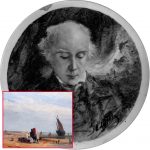 Thomas Boys was born at London. He was articled to the engraver George Cooke. When his apprenticeship came to an end he went to Paris where he met and came under the influence of Richard Parkes Bonington, who persuaded him to abandon engraving for painting. Here is 1 painting we…
Thomas Boys was born at London. He was articled to the engraver George Cooke. When his apprenticeship came to an end he went to Paris where he met and came under the influence of Richard Parkes Bonington, who persuaded him to abandon engraving for painting. Here is 1 painting we… - 89
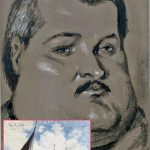 Adolphe Hervier, in full: Louis-Henri-Victor-Jules-François-Adolphe Hervier was a French painter and engraver, known for his rural genre scenes. Over his lifetime, his style changed from a strict Romanticism to an early type of Impressionism. He was the son of a painter.Despite being Parisian, his favorite painting locations were in Normandy;…
Adolphe Hervier, in full: Louis-Henri-Victor-Jules-François-Adolphe Hervier was a French painter and engraver, known for his rural genre scenes. Over his lifetime, his style changed from a strict Romanticism to an early type of Impressionism. He was the son of a painter.Despite being Parisian, his favorite painting locations were in Normandy;… - 88
 Louis-Alexandre Dubourg is a French painter, born and died in Honfleur. He worked as a commercial agent, painting as a serious hobby. It was only after meeting with a professional artist that he decided to paint for a living. He mostly painted cities in Normandy. Here are his paintings he…
Louis-Alexandre Dubourg is a French painter, born and died in Honfleur. He worked as a commercial agent, painting as a serious hobby. It was only after meeting with a professional artist that he decided to paint for a living. He mostly painted cities in Normandy. Here are his paintings he… - 88


